In a world filled with vibrant colors and super clear images, black and white photography stands out! It is such a timeless nod to the wonderful power of simplicity. When you gently remove those colors, what is left is the true spirit of your subject, raw feelings, striking contrasts, and heartwarming stories that might otherwise disappear behind all the colorful busyness. For us wedding photographers especially, so many of life’s profound happenings truly pop when captured in monochrome.
Table of Contents
- The Enduring Power of Black and White Photography
- The Impact of Monochrome Images
- Understanding the Fundamentals
- Getting Started: Important Equipment Considerations
- Controlling Composition for Monochrome
- Harnessing the Power of Light and Shadow
- Perfecting Your Exposure Settings
- Creative Use of Filters in Black and White
- Subject Selection in Black and White Photography
- Post-Processing Techniques for Black and White
- Printing and Displaying Black and White Images
- Finding Inspiration and Developing Your Style
- Common Mistakes and How to Avoid Them
- Conclusion: Finding Your Unique Voice
The Enduring Power of Black and White Photography
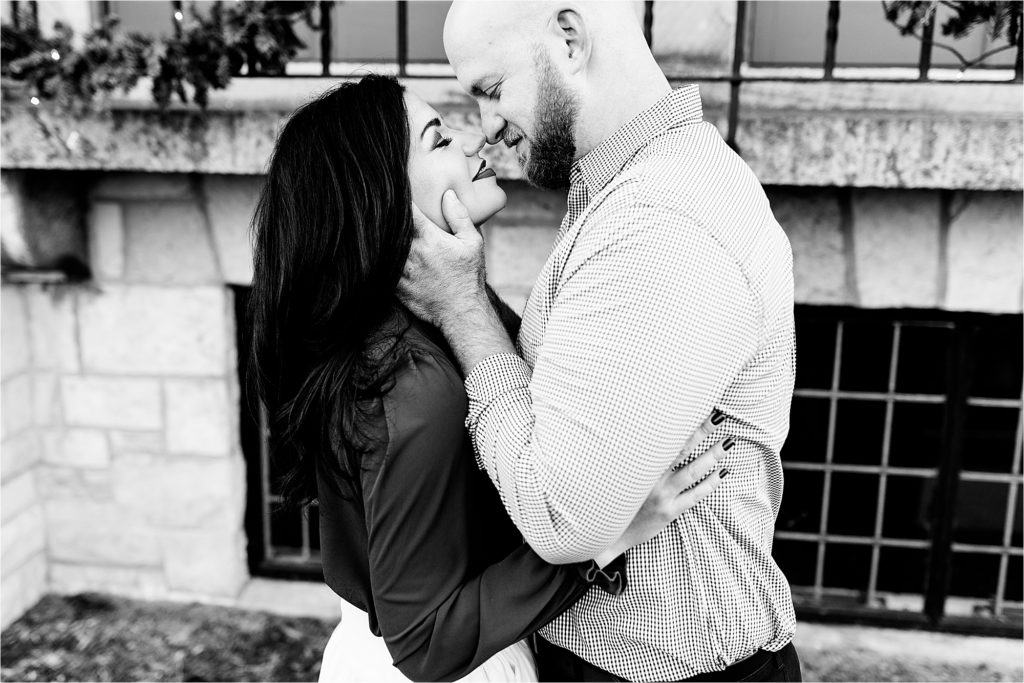
Black and white photography keeps a special place in everyone’s hearts, both for those of us behind the camera and those admiring the photos! What so many folks do not quite realize is that taking away color is not actually losing anything, it is truly adding something deeper. Monochrome photography really encourages you to see differently, to focus on the light, the shadows, the textures, and the shapes in their purest forms. What a neat way to look at the world!
Industry insights actually show that high contrast photography has been a big trend from 2022-2025, with photographers using those strong differences between light and shadow to create truly dramatic effects. This even includes mixing color elements with black and white parts to make eye-catching visuals.
Antonia Deutsch, a well-known portrait photographer, shares her thoughts, “When shooting a portrait in black and white you are not distracted by the colors and it is much less confused, this allows me to capture the character of my sitter. My portraits are very calm and, I hope, timeless. I strive to make each portrait a true reflection of the individual.” It goes to show why monochrome remains so impactful for authentic portraiture!
Black and white photographs create a subtle distance that, surprisingly, helps viewers connect more intimately with the feelings in the picture. When we photograph a wedding, removing color really highlights those genuine feelings, like happy tears, joyful laughter, or tender cuddles, instead of letting the amazing decorations or attire steal the show.
The Impact of Monochrome Images
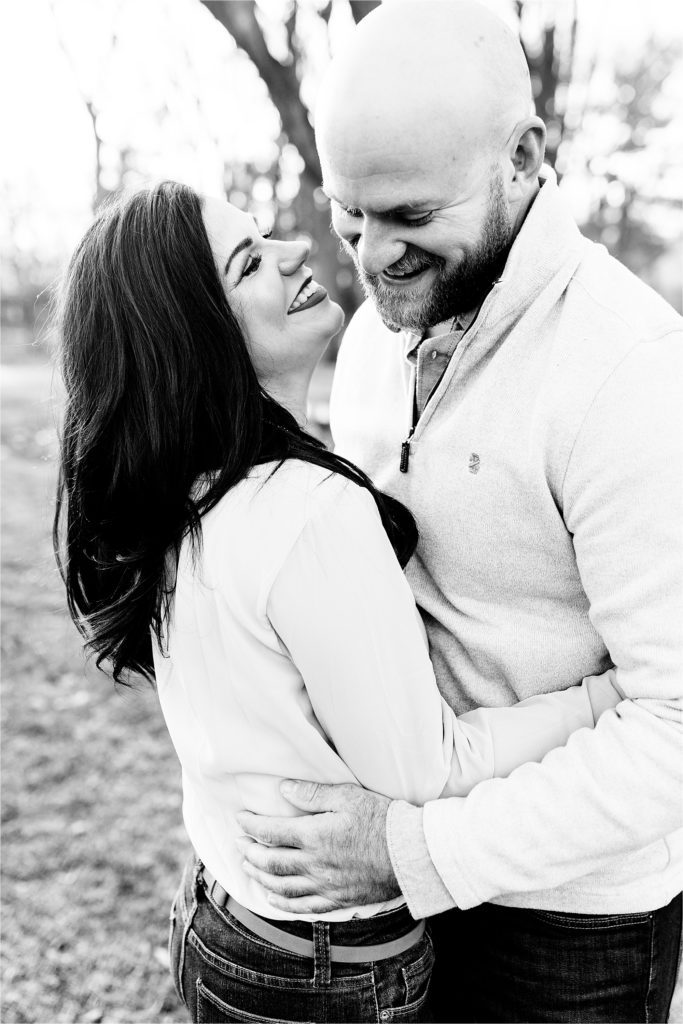
What makes a good black and white photograph is not about perfect technique, it is about connection! Monochrome images strip away all the everyday visual distractions, revealing something much more real underneath. This authenticity often creates an almost instant reaction in viewers, drawing them into the landscape more effectively than color sometimes can.
Ted Grant, often called the “Father of Canadian Photojournalism,” said it so well, “When you photograph people in color, you photograph their clothes. But when you photograph people in black and white, you photograph their souls!”
The interplay between light and dark beautifully mirrors our understanding of extremes, happiness and sorrow, hope and even despair. This visual parallel makes monochrome especially strong for capturing charged experiences, like a dad seeing his daughter in her wedding dress for the first time, or the sweet, quiet intimacy between newlyweds when they think no one is looking. So precious!
Black and white photography is also fantastic at turning tricky lighting situations into fresh creative chances. A rainy wedding day that might look a bit dreary in color transforms into something dramatically atmospheric in monochrome. Similarly, bright midday sun can create amazing contrasts and patterns when converted to black and white.
Understanding the Fundamentals
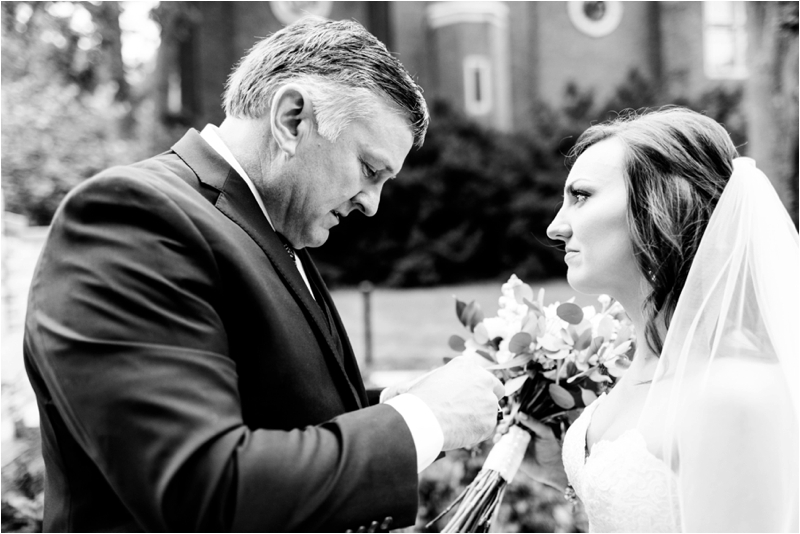
Before we jump into all the neat advanced techniques, it is so helpful to grasp the basic elements that make monochrome images so powerful. Even though these ideas might seem simple, they are the building blocks that really make a black and white photograph extraordinary, not one that happens to lack color.
Difference Between Black and White, Monochrome, and Grayscale
These terms, while often used interchangeably, refer to different ideas that really shape how you create images!
- Black and white photography, in its truest sense, refers to images made up only of pure black, pure white, and varying shades of gray in between, that classic style we associate with photography legends like Ansel Adams or Henri Cartier-Bresson.
- Grayscale photography is technically the same as black and white in the photography world, though the term is more often used in graphic design. It is about mapping color values to a scale of neutral grays.
- Monochromatic photography is actually a broader category! While all black and white images are monochrome, not all monochrome images are black and white. Monochrome includes any image created using variations of one color, like sepia tones, cyanotypes, or images tinted with any single hue.
When you are setting up your camera for black and white work, remember that shooting in RAW keeps all that color info, giving you so much more freedom in post-processing than using your camera’s in-camera black and white JPEG settings! This approach really allows you to make more thoughtful decisions about how different colors will look as grayscale tones.
How Tonality Affects Mood
Tonality, how light and dark values are arranged throughout your image, is quite possibly your most impactful tool in black and white photography. Without color to influence feelings, these tonal qualities really do the heavy lifting in bringing out the mood and atmosphere!
Internationally known fine art photographer Dominic Rouse notes, “I find that color distracts the eye, but black and white retains the essence.” It beautifully points out how monochrome distills an image down to its core components!
HIGH-CONTRAST images with deep blacks and bright whites create a sense of drama and intensity. This approach works so well when you want to highlight the sharp lines of a beautiful gown against a dark background or photograph striking environmental portraits.
LOW-CONTRAST images, with their gentle gradations of gray, bring out a dreamy, nostalgic, or peaceful vibe. This softer approach is perfect for intimate portraits, foggy landscapes, or capturing delicate instances like a bride’s veil fluttering in a soft breeze. So lovely!
MID-TONE focused images, where extreme blacks and whites are less common in favor of the gray scale in between, often share a journalistic or documentary feel. This approach feels so honest and natural, perfect for candid wedding happenings or telling real stories.
The secret to controlling tonality is truly envisioning how different elements in your scene will translate to grayscale before you even press the shutter! With practice, you will instinctively know how different colors and lighting conditions will appear as tones.
Getting Started: Important Equipment Considerations
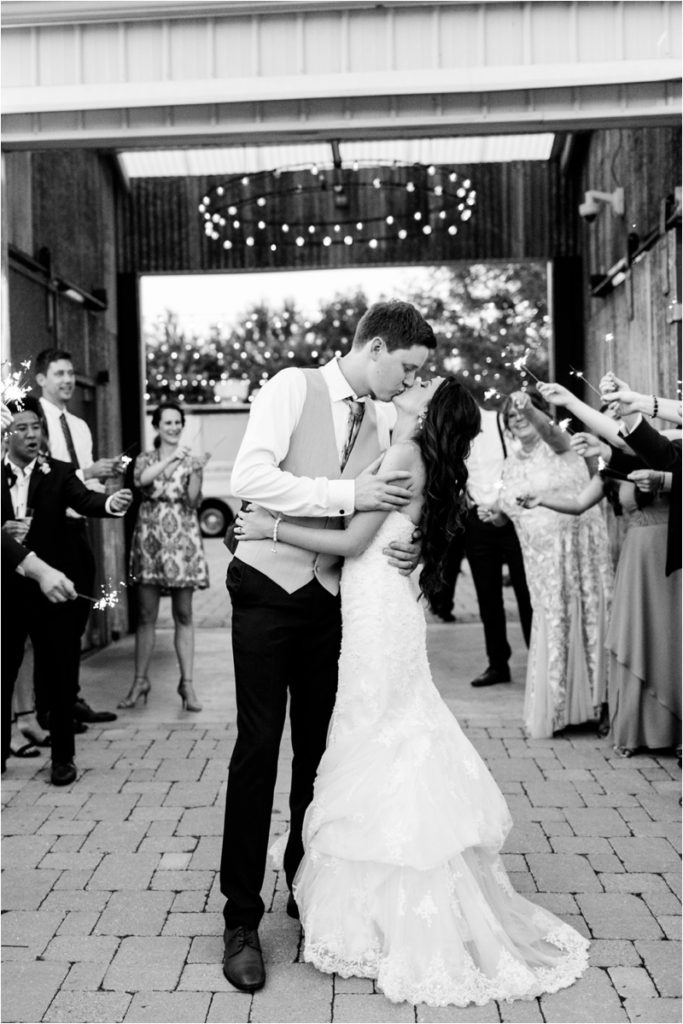
Many photographers new to black and white mistakenly think they need special equipment to create amazing monochrome results. While there are dedicated black and white cameras, truly compelling monochrome images can be made with almost any modern camera! What truly matters most is understanding how your equipment choices affect your workflow and your final images.
Choosing the Right Camera and Lens
For most of us photographers, a good digital camera with strong black and white conversion abilities is a practical choice! Cameras from Fujifilm’s X-series are especially loved for their film simulation modes that beautifully capture the feel of classic black and white films. For wedding photographers particularly, full-frame cameras like the Nikon Z5 or Canon EOS R6 offer wonderful dynamic range, which is so important for handling the high-contrast situations often found in wedding venues.
Your lens choice really influences how your black and white images will look. Since color no longer separates elements in your shot, lens qualities like sharpness, contrast, and rendering become even more significant!
- For portraiture, a medium telephoto lens (like an 85mm or 105mm equivalent) with a wide aperture creates beautiful separation between your subject and the background.
- For environmental portraits or wider wedding scenes, a 35mm or 50mm prime lens often strikes that perfect balance between intimacy and context.
For those who love the hands-on process of film, cameras like the Nikon FM2 or Canon AE-1 Program are still great choices. Shooting with black and white film encourages you to slow down, visualize your final image before clicking, and really develop a deeper understanding of exposure and tonality.
Shooting RAW for Maximum Flexibility
One of the most important technical decisions when shooting black and white is picking your file format! RAW is absolutely key for creating the highest quality monochrome images, especially when converting from color digital captures.
When you are shooting black and white in RAW format, your camera records all the color information from the scene, giving you so much freedom during conversion! This means you can adjust how different colors translate to grayscale tones long after you have left the shooting location, making a blue sky darker or brightening skin tones becomes possible in post-processing. How neat is that!
Even if your camera offers fantastic in-camera black and white conversions, consider shooting RAW+JPEG. This gives you both an instant black and white view and the full-color RAW file for custom conversion later. The RAW file keeps up to 14+ stops of dynamic range in modern cameras, letting you recover so much detail from highlights and shadows during conversion, which is so important for the dramatic lighting often popular in monochrome work.
For wedding photographers, RAW’s adaptability is especially priceless! The same file might give you both a high-contrast, dramatic image for an album cover and a softer, more delicate version for parent prints, a versatility that is not possible with in-camera JPEG conversions.
Controlling Composition for Monochrome
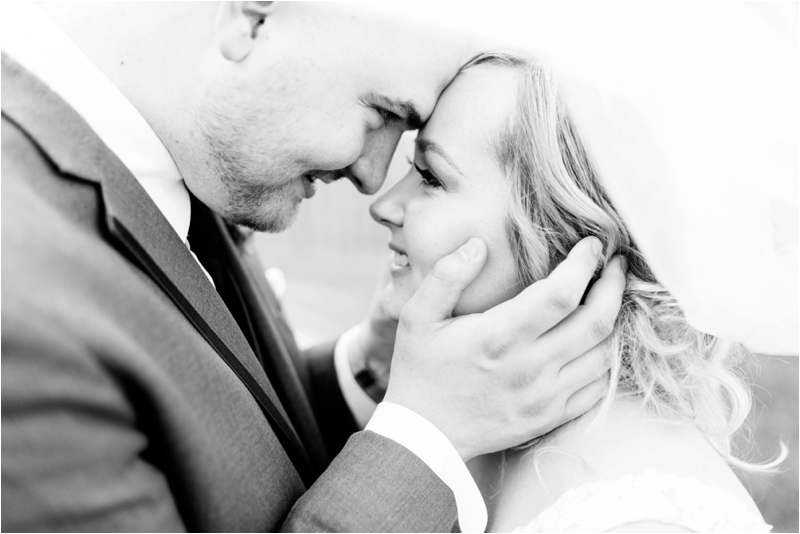
When color is removed, composition really becomes the guiding hand of your black and white photography. Without the feelings and visual separation color offers, how you arrange elements in your frame determines whether your image is a gentle whisper or a powerful shout!
The Power of Lines, Shapes, and Patterns
In black and white photography, lines become strong directional forces, gently guiding your viewer through the frame. A winding path, a dramatic horizon, or architectural elements create visual journeys that feel more pronounced without color competing for attention!
- Strong diagonal lines bring dynamic energy.
- Horizontal lines bring a sense of peace.
- Vertical lines suggest strength and stability.
Looking for fresh black and white photography ideas? Try shooting familiar structures from unique angles to really highlight their geometric qualities! A spiral staircase photographed from below turns into a captivating pattern rather than a building feature.
Shapes become especially important in monochrome work! The silhouette of a couple against a bright window or the gentle curve of a bride’s dress against a dark background creates visual impact through shape. Try placing contrasting shapes near each other, like soft, flowing forms next to rigid geometric elements, to create a visual tension that draws viewers right in.
Patterns are incredibly powerful in black and white photography! The repetition of elements creates a visual delight that color might actually lessen. When you are including patterns, remember that a break in the pattern (we call it a “pattern interrupt”) creates a natural focal point. A single flower facing a different direction in a bridal bouquet becomes a focal point by its form, not its color!
The Importance of Negative Space
Negative space, those empty areas around and between your subject, takes on such an interesting, sculpted quality in black and white photography. These areas are not “empty”; instead, they offer a quiet breathing room that defines and highlights your main subject!
In wedding photography, negative space can turn ordinary happenings into beautiful artistic statements. A bride silhouetted against a huge, empty sky, a single wedding ring placed in the corner of an otherwise empty frame, or a couple captured at the end of a long, empty hallway, these compositions use negative space to create deep impact and focus attention right where you want it!
Black and white photography lets negative space take on truly graphic qualities. Deep shadows can become solid black shapes that beautifully frame your subject! Bright backgrounds can appear as clean white space that isolates your subject with amazing clarity.
Night photography especially benefits from this technique, where negative space creates a diorama-like quality by isolating illuminated subjects against pure darkness. A couple sharing their first dance under a spotlight becomes even more intimate when surrounded by the negative space of darkness, focusing viewers entirely on their connection rather than any reception hall décor.
Harnessing the Power of Light and Shadow
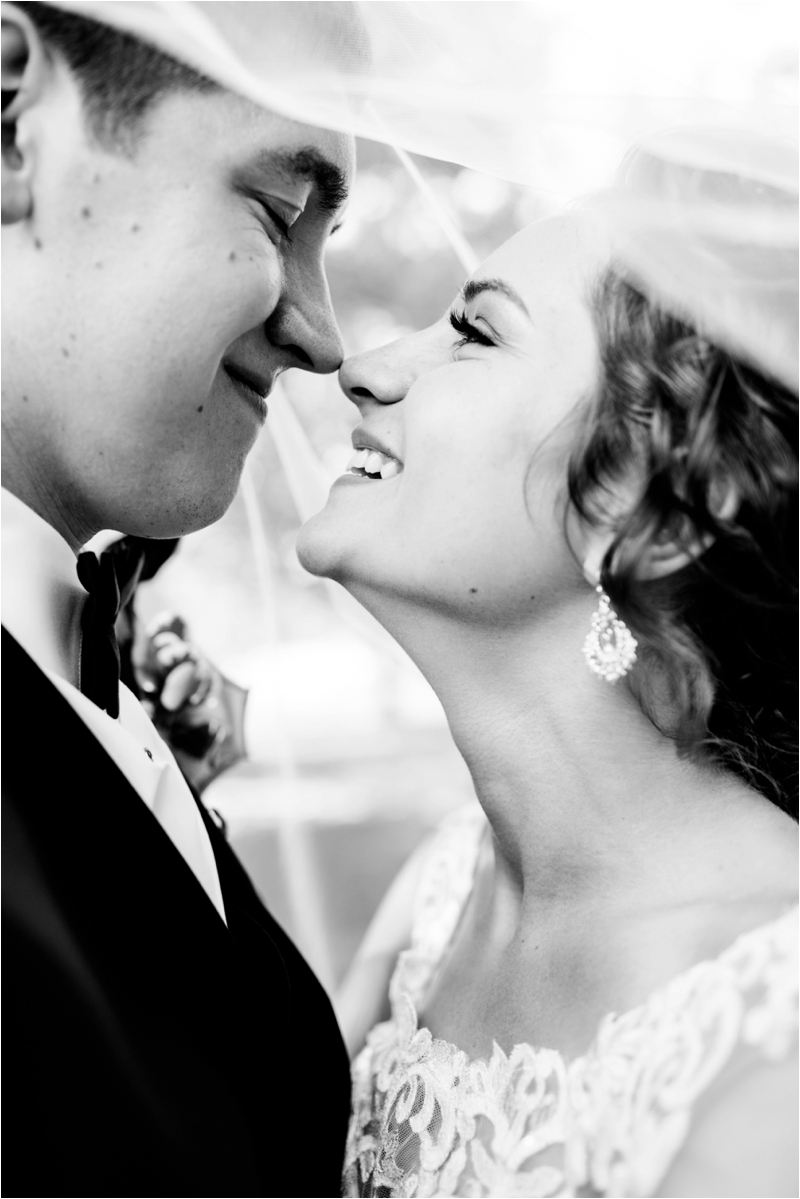
In color photography, light brings illumination and color temperature. In black and white photography, light truly becomes something far more fundamental, it becomes the very essence of your image!
Learning to See in Light and Shadow
Developing an eye for light and shadow in monochrome needs a little shift in perspective. Instead of seeing the world in colors, you will want to train yourself to see it as an interplay of brightness levels, from the deepest blacks to the brightest whites, with countless grays in between.
Scottish landscape photographer Ruairidh McGlynn notes, “When you shoot in black and white, you capture the soul,” truly highlighting the deeper way of seeing that monochrome needs!
Start by looking at scenes in terms of their tones rather than colors. A bright red dress and a bright yellow flower might look identical in black and white if they reflect the same amount of light, while a deep blue sky and a green lawn might become similar mid-gray tones without careful thought to exposure.
High-contrast lighting creates striking black and white images with minimal gray tones. Think of that film noir feel with its deep shadows and bright highlights! To get this look, place your subject near a single, strong light source, maybe a window with direct sunlight or a bare studio light.
Conversely, low-contrast lighting, like an overcast day or soft studio lighting, produces images with a fuller range of gray tones. This softer approach reveals delicate details and textures that might get lost in more dramatic lighting. Wedding photographers often prefer this lighting for bridal portraits, as it beautifully shows off intricate dress details while keeping facial features lovely.
A fun way to develop your “black and white vision” is to set your camera’s LCD or electronic viewfinder to monochrome mode! This lets you see in real-time how your scene translates to black and white, helping you recognize when lighting conditions will create captivating tonal contrast.
Working with Natural and Artificial Light Sources
Both natural and artificial light have unique benefits for black and white photography!
Natural light offers ever-changing conditions throughout the day:
- Early morning and late afternoon provide directional golden hour light with longer shadows that highlight texture and form, perfect for landscape, architectural, or environmental portrait work.
- Midday sunlight, often avoided in color photography because of its intensity, can be used so effectively in black and white! The strong contrast creates graphic shadows that become fascinating elements of your shot. A bride and groom standing in direct sunlight with strong shadows creates a bold graphic statement in black and white that might not look as flattering in color.
- Overcast days offer soft, diffused lighting, perfect for intimate portraits or detailed shots! Without strong directional shadows, subtle textures and facial features emerge in gentle gradations of tone.
- Window light is especially wonderful for black and white portraiture! Placing your subject near a large window creates classic lighting patterns that sculpt faces with a beautiful three-dimensional quality. For wedding photographers working in darker venues, positioning couples near windows provides reliable, lovely light for timeless portraits.
Artificial lighting gives you precise control, no matter the conditions!
- Low-key lighting keeps most of the scene in shadow with selective illumination on key elements, creating moody, inviting atmospheres. Try using a single studio light with a grid to focus light narrowly on your subject’s face while letting the rest of the scene become shadowed.
- Hard light sources, unmodified studio lights, bare bulbs, or focused spotlights, produce sharp, well-defined shadows that create distinctive patterns and dramatic contrast. While often avoided in color portrait work, these bold shadows can become powerful graphic elements in black and white!
- Three-point lighting (key light, fill light, and rim light) gives you complete control over shadow richness and edge definition. For inviting portraits, try setting your fill light 1-1.5 stops lower than your base exposure to maintain shadow detail without losing contrast.
Whether you are working with natural or artificial light, the secret is anticipating how light quality, direction, and intensity will translate to monochrome tones. By developing this ability to “pre-visualize” your black and white result while you are shooting, you will capture images with intentional tonal relationships rather than hoping for the best with your conversion!
Perfecting Your Exposure Settings
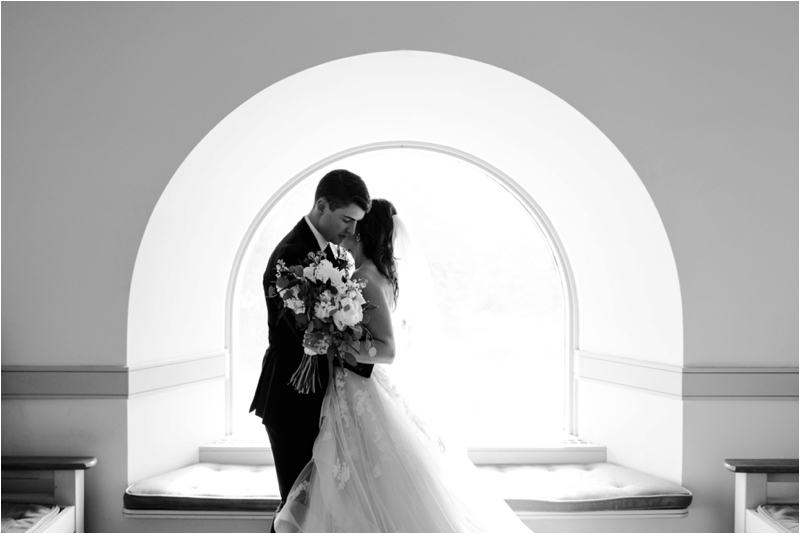
The technical groundwork of striking black and white images really lies in your exposure decisions! Unlike color photography, where accurate exposure often aims to preserve natural color, black and white exposure can be approached with much more creativity.
Experimenting with Exposure for Dramatic Effects
Black and white photography thrives on contrast, that interplay between highlights and shadows that creates depth and visual interest! Your exposure settings are the main tools for managing this contrast right in your camera.
For dramatic, high-contrast images with deep shadows and bright highlights, you might consider intentionally underexposing by 1-2 stops. This approach creates moody, atmospheric images where shadows become rich blacks and highlights keep detail without looking washed out. When photographing weddings in this style, expose for the highlights (often the bride’s dress or the brightest part of the face) and let the shadows fall darker.
On the other hand, high-key imagery, known for bright, airy tones with minimal shadows, needs overexposure by about 1-3 stops! When capturing these delicate images, expose for the shadows and let highlights get close to (but not quite reach) pure white. High-key techniques are fantastic at conveying feelings of purity, joy, and simplicity, making them perfect for bridal portraits.
Your black and white settings should always begin with ISO selection:
- For the best image quality, keep ISO between 100-400 when you have good light!
- Do not be afraid of higher ISO when you need it, grain can actually make certain black and white styles look even better.
- For street photography with available light, start with ISO 800 and increase to 1600 if necessary.
Aperture choice affects both exposure and depth of field:
- For maximum sharpness across the entire frame (like landscapes or architecture), set your aperture between f/8 and f/11.
- For portraits with dreamy background blur, open your aperture wide (f/1.4-f/2.8) and manage exposure through shutter speed and ISO instead.
Managing High Contrast Scenes
High contrast scenes offer both a challenge and a wonderful chance in black and white photography! While the human eye can see about 20 stops of dynamic range, even the best digital cameras capture only around 14-15 stops.
When you are faced with high contrast situations, perhaps a bride in a white dress standing in spotty sunlight, you have several ways to approach it!
- Expose for the highlights to keep detail in the brightest areas, accepting that some shadow detail might be lost. This works well when the brightest elements have important details (like texture in a wedding gown) and shadows can become graphic elements in your picture.
- Expose for the midtones and plan to bring back both highlight and shadow detail in post-processing. This works best when you are shooting RAW files, which retain more information across the tonal range.
- Bracket your exposures, taking multiple shots at different exposure values that you can combine later. While HDR techniques are often linked to color photography, they can create amazing black and white images with both highlight and shadow detail preserved!
Elliott Erwitt, a Magnum photographer known for his candid black and white photography, shared this insight: “Color is descriptive. Black and white is interpretive.” This perfectly sums up how exposure choices in black and white photography are about creative interpretation rather than recreating reality exactly!
For wedding photographers working in challenging lighting situations, understanding how different fabrics react to light is so important. White satin reflects light differently than white lace or matte fabric, potentially creating exposure tricky spots. Spot metering different areas of a bride’s dress can show surprising tonal variations that might need exposure adjustment to look right.
Creative Use of Filters in Black and White
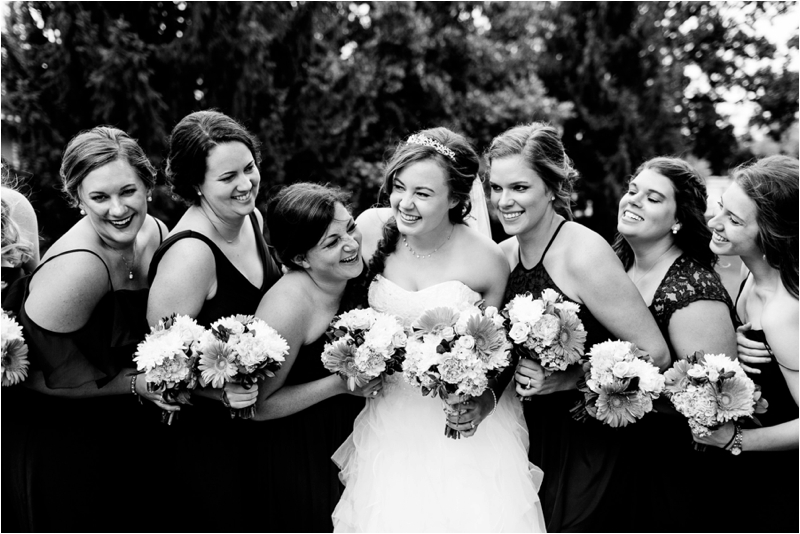
Filters have been so important in black and white photography since the early days of film! In today’s digital world, both physical lens filters and their software versions offer powerful, creative control over your monochrome vision.
When and How to Use Filters
The thoughtful use of filters can truly transform an ordinary black and white image by managing tonal relationships and creating striking contrast where the unassisted eye might see little difference!
Color contrast filters (red, orange, yellow, green, blue) work by lightening their own color and darkening their complementary colors in the black and white conversion:
- Red filters dramatically darken blue skies while lightening red and orange elements, creating amazing contrast between sky and architecture.
- Yellow filters offer a more subtle effect, gently darkening blues while keeping a more natural overall look, excellent for wedding photography when you want a mild boost in contrast!
- Green filters are especially good for photographing plants, brightening different green tones and creating separation between similar plants.
Polarizing filters reduce reflections from non-metallic surfaces like water or glass. In black and white photography, polarizers make texture pop and increase contrast! They are so valuable for outdoor wedding photographers because they can cut through glare on water, reduce shine on skin, and add drama to cloudy skies all at once.
Neutral Density (ND) filters reduce light entering your lens without changing colors, letting you use longer exposures even in bright conditions. This opens up creative opportunities unique to black and white, like creating dreamy water effects, blurring moving crowds while keeping buildings sharp, or capturing dramatic cloud movement!
The secret to using filters well is understanding that you are not making the image darker or lighter, you are intentionally changing the tonal relationships between different colored elements. This lets you create separation and emphasis that would not exist in a direct conversion!
Software vs. Physical Filters
The digital revolution has really changed how photographers approach filters for black and white work! Today, you have two distinct paths: using traditional physical filters on your lens during capture, or applying digital filter effects in post-processing.
Physical filters offer an authentic, “get it right in camera” approach! What you see through the viewfinder is quite close to your final image, giving you immediate feedback. Physical filters also capture optical effects that can be hard to perfectly recreate digitally. However, they do require an investment in extra gear and reduce light reaching your sensor (usually by 1-3 stops).
Software filters in post-processing offer amazing adaptability! Programs like Adobe Lightroom, Capture One, and Silver Efex Pro include sophisticated tools that wonderfully simulate traditional color filters. The digital approach also allows for techniques impossible with physical filters, such as applying different filter effects to specific parts of your image.
For wedding photographers, the non-destructive nature of digital filtration is particularly valuable. You can create both dramatic versions with strong filtration and more subtle versions from the same RAW file, offering clients diverse choices without needing to reshoot!
Many dedicated photographers use a blended approach, using physical filters when their optical properties are genuinely helpful (polarizers, for instance) and rounding it out with digital techniques for fine-tuning and creative exploration.
Subject Selection in Black and White Photography
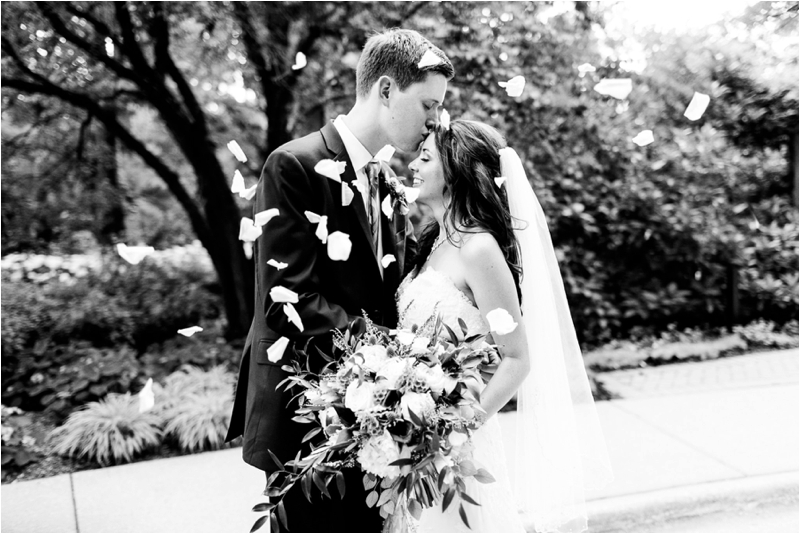
The most impactful black and white photographs go beyond mere documentation to tell truly captivating visual stories! Understanding what makes a subject suitable when stripped of its color is so important for creating striking monochrome images.
Ideal Subjects for Monochrome
The most successful black and white subjects usually have one or more of these qualities!
Strong contrast naturally draws the viewer’s eye in monochrome. Subjects with built-in light-dark differences, like buildings with distinct shadows, portraits with dramatic side lighting, or landscapes with stormy clouds against bright skies, create an immediate visual impression when changed to black and white.
Texture really stands out when color is not competing for attention! Weathered faces, rough stone walls, rippled water surfaces, or the intricate details of a wedding dress show their tactile qualities more clearly in monochrome. For wedding photographers, this might mean zooming in on the textural contrast between a delicate lace veil and a groom’s textured suit.
Captivating forms and shapes create strong graphic elements! Silhouettes, geometric architectural details, the curve of a road, or the organic lines of the human form become more noticeable when color is removed.
Sincere expressions and human connections often gain such depth in black and white! Without color’s cues, viewers focus more intently on facial expressions, body language, and relationships between subjects. For wedding photographers, candid happenings of sincere feelings often gain a timeless quality and richness when captured in monochrome.
Dramatic lighting conditions naturally lend themselves to black and white! Backlighting, rim lighting, dappled light through trees, or the gentle graduation of light across a subject’s face can create striking monochrome images.
When you are approaching a possible subject, ask yourself: “What’s the main visual story here?” If the answer involves contrast, texture, form, a feeling, or lighting rather than color relationships, you have likely found a perfect candidate for black and white!
Challenges with Colorful Subjects
Not all subjects easily translate to monochrome, especially those whose main impact relies on color relationships!
Scenes where similar colors have similar brightness levels can be especially tricky. A vibrant garden with red, green, and blue flowers might appear as an undefined gray mass in a direct conversion. In these situations, using filters (physical or digital) to distinguish these tones becomes so important!
Sunrise and sunset scenes often lose their main appeal in black and white. The warm golden light that makes these moments so special might become lighter grays without special editing. To make these subjects work, focus on silhouettes, reflections, or dramatic cloud formations rather than the colorful light itself.
Subjects where color is the primary storytelling element present clear challenges. A rainbow, autumn leaves, or lively festival scenes get their impact mainly from color relationships. While these can still work in black and white, you will need to shift focus to other elements like contrast, composition, or human feeling.
When you are working with challenging colorful subjects, remember that black and white conversion is not taking away color, it is transforming color information into tonal relationships! This transformation requires purpose and skill.
The very strongest monochrome photographs are planned as black and white from the moment you take the shot, with careful thought to elements that will truly be highlighted without color. For wedding photographers, developing a sense for which happenings will translate beautifully to black and white is a priceless skill!
Post-Processing Techniques for Black and White
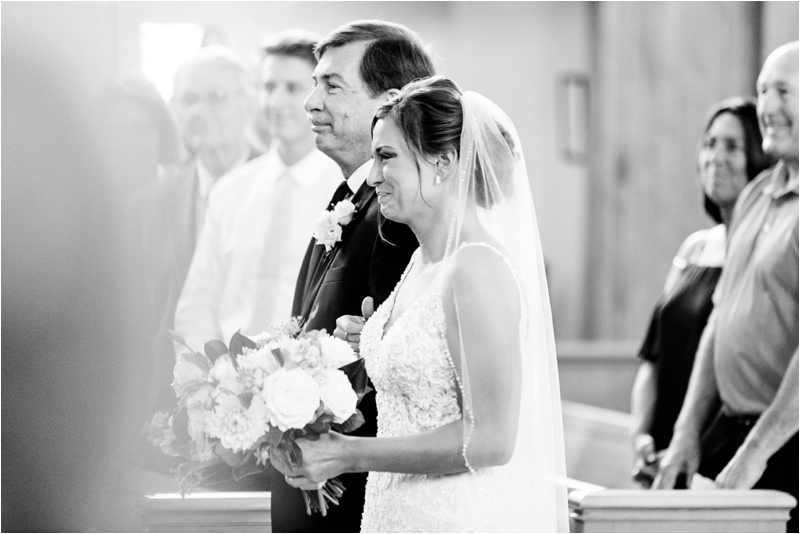
What you do after you take the photo is as important as what you do during! Getting good at black and white digital photography means understanding both basic adjustments and more advanced techniques that add depth, dimension, and impact to your images.
Essential Black and White Editing Techniques
The starting point of effective black and white editing begins with converting properly from color! Simply making a color image desaturated rarely creates compelling results.
- Start with RAW format whenever you can! RAW files keep all original color information, giving you maximum flexibility when converting to black and white.
- Use dedicated black and white conversion tools that let you control how different colors turn into grayscale tones. In Adobe Lightroom or Capture One, the Black & White mixer (sometimes called the HSL/Color panel for black and white) allows you to control how each color channel adds to your final monochrome image.
- Adjust contrast thoughtfully. Unlike color images where too much contrast can look unnatural, black and white photographs often benefit from more noticeable contrast. The Contrast slider offers a global adjustment, but for more subtle control, use the Highlights, Shadows, Whites, and Blacks sliders.
- Enhance texture carefully! Clarity and Texture adjustments make edges and surface details stand out. Use these tools wisely, too much clarity can make things look artificial, but the right amount really highlights texture in fabrics, architectural details, or natural elements.
- Consider a subtle vignette to gently direct the viewer’s eye to your subject. In black and white, vignettes can be more noticeable than in color work without looking out of place.
- Approach noise reduction with care. While color noise disappears in conversion, luminance noise remains and can look like film grain. Instead of aggressively removing this texture, think about embracing a little grain as part of your black and white style!
For wedding photographers, proper exposure and contrast adjustments are so vital for making white dresses show texture and detail. Gently reducing highlights while increasing whites can bring out fabric details while keeping that bright, clean look clients love!
Advanced Techniques for Depth and Dimension
Beyond basic adjustments, advanced techniques let you create black and white images with wonderful depth and resonance!
Dodging and burning, selectively lightening or darkening specific areas, creates a three-dimensional quality by enhancing the natural play of light and shadow. In software like Photoshop, use adjustment layers with layer masks to brighten eyes in portraits, enhance facial modeling, highlight architectural details, or guide the viewer’s eye through your picture.
Luminosity masks allow for precise targeting of specific tonal ranges. Unlike regular selections that target areas based on shape, luminosity masks pick pixels based on brightness! For wedding photographers, these are excellent for recovering highlight detail in dress fabrics while keeping overall brightness.
Split toning adds subtle color casts to highlights and shadows, creating feeling while maintaining the monochrome feel. Popular approaches include warm highlights with cool shadows (for a vintage look) or delicate sepia in both highlights and shadows for a timeless impression.
Local contrast enhancement takes global contrast adjustments to a more refined level. Using tools like Clarity with masks, or Photoshop’s “High Pass” filter technique, you can boost edge contrast in specific areas without affecting smooth parts like skin or sky.
Curves adjustments offer the most precise control over tone and contrast. Instead of simple slider adjustments, curves let you target very specific parts of the tonal range, creating gentle S-curves for classic contrast enhancement or manipulating individual RGB channels before conversion for color contrast effects.
For wedding photographers especially, developing a consistent editing style creates a cohesive look across albums and collections! Think about creating custom presets that capture your personal black and white vision, perhaps a slightly lower-contrast, softer look for bridal preparations, paired with higher-contrast, more dramatic processing for reception happenings.
Remember that post-processing should simply enhance the visual impact of your image without drawing attention to the editing itself! The most successful black and white edits feel right, as if the photograph could not possibly exist in any other way.
Printing and Displaying Black and White Images
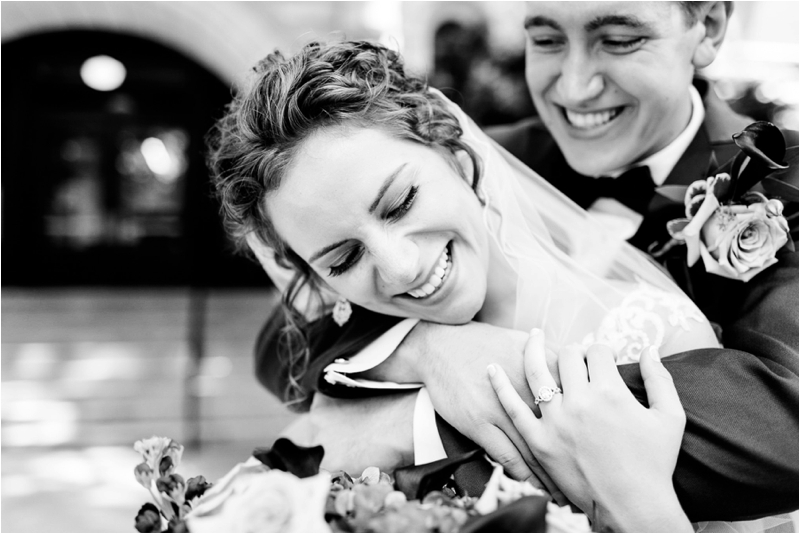
Creating a beautiful black and white image on your screen is only half the journey! The true measure of skill comes when you turn digital files into tangible prints that can be shared, displayed, and treasured.
Choosing the Right Paper and Finish
The paper you choose becomes such an important part of your black and white photograph, influencing everything from tonal range to texture and how sharp it appears!
Baryta papers are the gold standard for serious black and white prints. These papers contain barium sulfate, creating deep, rich blacks and brilliant whites with amazing tonal gradation in between! The slight sheen makes images appear sharper without distracting reflections, making them perfect for detailed architectural work or portraits where texture truly matters.
Cotton rag papers offer a more tactile, fine art feel. Papers like Hahnemühle Photo Rag provide a soft surface texture that adds character to landscape and artistic black and white work. The subtle texture creates a three-dimensional quality that makes images look more like paintings and less mechanical.
Matte papers have become quite popular for their non-reflective qualities and modern look. These papers excel with high-contrast, graphic images where deep blacks and crisp whites create visual impact. However, know that many matte papers offer a more limited tonal range than their shinier counterparts.
For wedding photographers offering client prints, think about the versatile appeal of pearl or luster finish papers! These middle-ground finishes offer much of the tonal range of shinier papers with less glare, making them great for albums and framed prints that might be displayed in different lighting conditions.
Beyond paper type, consider how the paper’s tone affects your image. Warm-toned papers add a subtle warmth to shadows and midtones, creating a timeless, classic feel reminiscent of traditional darkroom printing. Cool-toned papers create a more contemporary, crisp look.
Framing and Presentation Considerations
Framing is not about protection, it is the final creative choice that shapes how people experience your photography!
Classic black and white photography typically looks wonderful with simple, elegant framing that does not compete with the image. Thin black frames create clear boundaries while letting the image be the star! White frames can look beautiful with high-key images. Natural wood frames bring warmth that perfectly complements the timeless quality of black and white prints.
Matting needs careful thought! The traditional approach uses white or off-white matting to create breathing room between the image and the frame. For a more dramatic effect, consider a double mat with a thin black inner mat and a wider white outer mat, which subtly highlights the image’s edges.
Spacing is so important in black and white presentation! Traditional framing often uses generous white space around the image, letting it “breathe” within the frame. This approach works especially well for documentary or fine art prints.
Glass choice really influences how viewers experience your black and white photography. Think about museum or anti-reflective glass that practically disappears, letting viewers connect directly with your image without distracting reflections! UV-protective glass is so important for preserving black and white prints.
For wedding photographers delivering client images, presentation becomes part of your brand experience! Consider including one special framed print with wedding packages, perhaps a timeless black and white memory displayed in a quality frame that shows off your artistic vision and encourages clients to properly display other prints they might order.
Remember that lighting your displayed black and white photography is the last, important factor! Halogen or LED lighting designed specifically for art illumination can enhance the perceived tonal range, making blacks appear richer and whites more luminous. Avoid direct sunlight, which speeds up fading even with protective glass.
Finding Inspiration and Developing Your Style
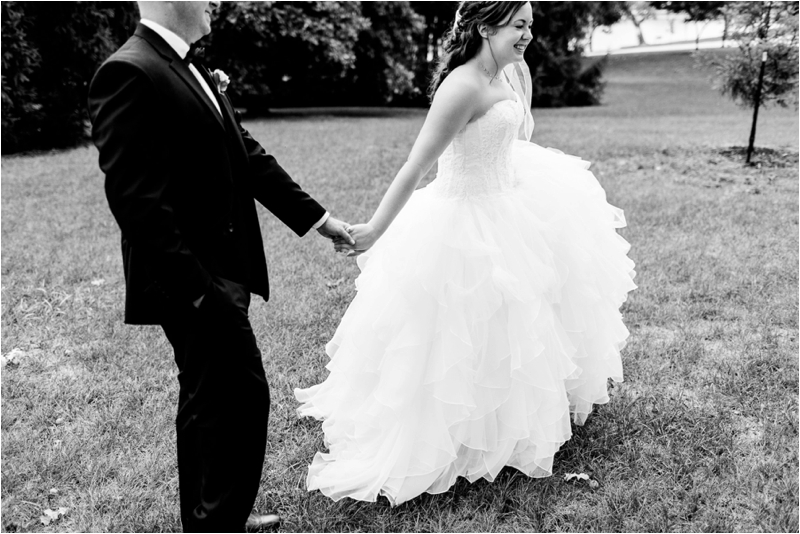
Growing as a black and white photographer means finding inspiration from the masters while creating your own unique vision! By studying both historical giants and current innovators, you can create work that honors tradition while expressing your distinct perspective. So fun!
Classic Black and White Photographers to Study
The very best black and white photographers throughout history offer priceless lessons in composition, light, and telling stories with feelings!
Ansel Adams (1902-1984) completely changed landscape photography through his majestic Sierra Nevada pictures and his creation of the Zone System, a thoughtful way to expose and develop photos. Study his work to understand how careful exposure decisions create prints with both dramatic impact and subtle detail!
Henri Cartier-Bresson (1908-2004) was a pioneer of street photography and the idea of “the decisive moment,” that split second when visual and elements perfectly align. His compositions used geometric principles and natural framing that wedding photographers can adapt to create more inviting, unposed occurrences!
Irving Penn (1917-2009) created beautifully timeless portraits with remarkable simplicity. His studio work shows how removing color and context truly focuses attention on the subject’s essence. Penn’s careful attention to tonal relationships offers valuable lessons for today’s portrait photographers.
Dorothea Lange (1895-1965) showed how black and white images can capture human dignity and struggle with a respectful closeness. Her photos from the Depression era, like “Migrant Mother,” teach photographers how to approach difficult subjects with kindness. Wedding photographers can learn from her ability to capture genuine feeling in unguarded occurrences.
To truly learn from these masters, do not admire their images, really study them! Notice how they use lines, shapes, and forms; observe how they handle the tonal range; think about their compositional choices; and consider how their technical decisions serve the impact of their work.
Contemporary Trends in Black and White Photography
While classic photographers built the foundation, contemporary artists keep innovating with approaches that expand the possibilities of monochrome expression!
According to industry trend analysis, between 2022-2025, shadow-focused composition has become a really important, expressive element in modern black and white photography. Skilled photographers are intentionally using shadows to add depth, drama, and narrative to their images. This trend shows a deeper understanding of how monochrome imagery can convey feelings through the thoughtful harmony of light and dark areas.
Another significant trend is the minimalist aesthetic with deeper meaning. Black and white photography continues to do well as a gentle contrast to the overwhelming visual stimulation of colorful imagery. There is almost a “bold” quality to choosing monochrome in 2025, with photographers using the style to remove distractions and reveal deeper truths about their subjects.
In the wedding industry specifically, black and white photography is seeing a big return for 2025, but with a modern flair! According to Nathan Desch Photography, photographers are now creating black and white wedding images with “deep contrasts, moody lighting, and cinematic compositions.” The style includes “intense shadows and high-grain film effects, giving the photos an artsy, noir-like aesthetic.”
High-contrast, dramatic black and white portraiture has emerged as a leading contemporary trend! This style has influenced wedding photography, where couples increasingly ask for editorial-style black and white images that feel both timeless and chic.
Documentary photographers are increasingly using black and white to cover topics with a sense of timelessness. By removing the specific time period that color sometimes implies, these photographers create work that connects current events to historical patterns and universal human experiences.
Common Mistakes and How to Avoid Them
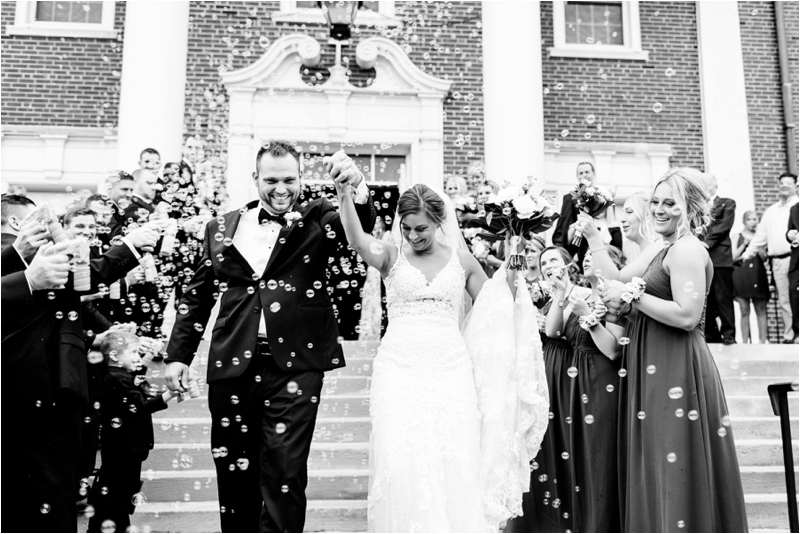
Even seasoned photographers can fall into predictable traps when working in monochrome! Understanding these usual pitfalls, and how to steer clear of them, can really improve your black and white photography.
Overlooking Contrast and Dynamics
Perhaps the most common technical slip-up is settling for flat, lifeless images that lack tonal range and visual punch. Without color to create separation, contrast becomes the main way to create depth and dimension!
The “muddy middle” situation happens when images mainly have mid-tones without true blacks or bright whites. This creates a flat, gray look that does not grab a viewer’s attention. To avoid this, make sure your adjustments include contrast that creates a full tonal range! Check your histogram to confirm your image has details across the whole spectrum from shadow to highlight.
On the flip side, many beginners overdo it by pushing contrast to extremes, creating harsh images with shadows that are too dark and highlights that are completely blown out. While high-contrast can be effective for certain subjects and moods, too much contrast sacrifices the delicate tonal gradations that give black and white photography its richness and depth.
Another common mistake is applying the same settings to every image, no matter the subject or lighting conditions. Different subjects need different approaches to contrast, portraits often look great with softer contrast that keeps skin details lovely, while architectural subjects might be truly wonderful with higher contrast that highlights their geometric forms.
Many photographers also do not consider the role of white balance in black and white conversion. Even though it might seem irrelevant once color is gone, the white balance of your original color image significantly affects how different hues translate to grayscale tones. Experiment with adjusting white balance before conversion to see how it impacts the relationship between elements in your scene!
Failing to Capture Emotion
Technical skill does not mean much if your photographs do not stir feelings! Many photographers get so focused on perfect exposure and sharp focus that they miss the impact that has made black and white photography so enduring.
The most common mistake is using black and white as an afterthought or a fix for uninteresting color images. Converting to monochrome will not magically turn a boring photograph into a compelling one! Instead, approach black and white as an intentional creative choice from the very moment you click the shutter.
Many photographers miss chances by focusing only on technical aspects rather than waiting for telling expressions, gestures, or interactions. For wedding photographers, this means being patient enough to capture that tearful look between parent and child or genuine laughter between newlyweds, rather than the ceremonial parts.
Another mistake is failing to match your black and white processing to the tone you want to convey. High-contrast, dramatic processing might diminish the gentle nostalgia of a tender occurrence, while soft, low-contrast processing could lessen the impact of a powerful landscape.
Remember that in black and white photography, the contrast ratio between highlights and shadows becomes so important! Where color photographers might aim to balance exposure across the frame, black and white photographers often intentionally increase contrast for impact. Do not be afraid to let shadows become completely black or allow highlights to approach pure white if it serves the feeling you are creating!
Conclusion: Finding Your Unique Voice
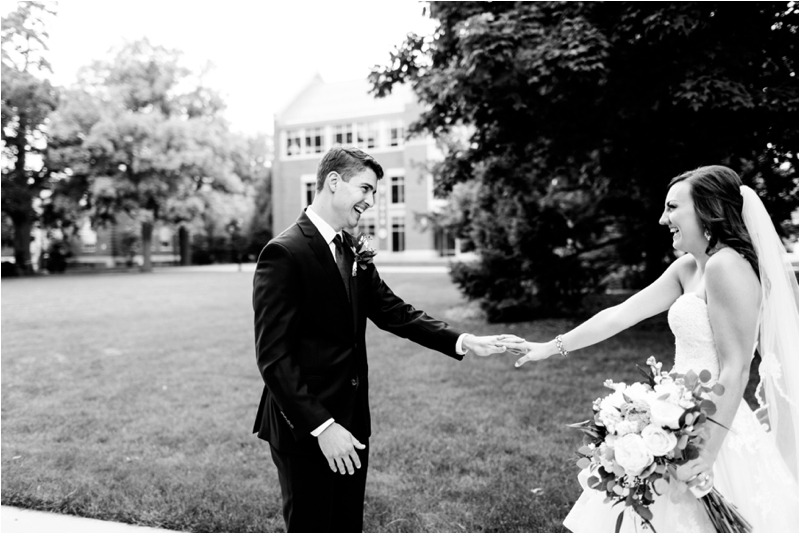
After working on the basics and exploring different ways to do things, you will eventually come to perhaps the most important creative challenge: finding your own special style! In a world where millions of images are made every day, discovering your unique perspective is not personally fulfilling, it is becoming more and more necessary.
Your journey as a black and white photographer is not a straight line, but more like a spiral that continually revisits core ideas while widening your creative horizons. The first step is figuring out what draws you to black and white photography in the first place! Is it the timeless quality? The focus on shape and texture? The direct connection? Understanding what you love helps clarify what you want to express.
Study the masters thoughtfully, not admiringly. When an image moves you, ask yourself exactly why! Is it the approach to contrast? The composition? The timing? Breaking down the work of photographers you admire helps you use their insights without copying their style.
As Elliott Erwitt so wisely said: “Color is descriptive. Black and white is interpretive.” This perfectly sums up the core of monochrome photography, it is not about showing reality exactly as it looks, but rather interpreting it through your unique vision and perspective.
What makes black and white photography so endlessly appealing is its paradoxical nature, by restricting color, it actually expands creative possibilities! This fundamental contradiction creates an artistic world with boundless room for exploration and new ideas, even after almost two centuries of photography.
The true strength of black and white photography is not in technical perfection, but in genuine self-expression! When your images show your unique perspective, your particular way of seeing light, shadow, form, and the present, they go beyond technique to become true artistic statements. This honesty connects with viewers more powerfully than technical skill ever could.
The wonder of black and white photography lies in its simultaneous simplicity and complexity, it is easy enough for beginners to create inviting images, yet nuanced enough to challenge masters throughout their entire careers! With patience, perseverance, and thoughtful practice, your work will grow into a unique vision that expresses your singular perspective on the world, in all its rich complexity of light, shadow, texture, and form.
Affiliate Disclosure: Some links in this post are affiliate links, meaning we may earn a commission if you make a purchase through our links, at no extra cost to you. As wedding photographers ourselves, we only recommend gear we’ve thoroughly researched or would use in our own business. Your support helps us continue creating valuable content for the photography community.